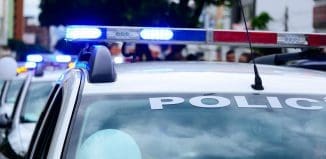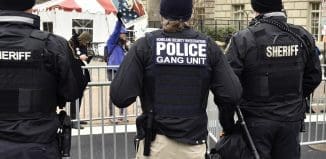Researchers: Despite Relative Calm, Terror Still a Threat
This post is also available in:  עברית (Hebrew)
עברית (Hebrew)
 Threats of terrorism and weapons of mass destruction do not seem as imminent today as they did after terrorists flew hijacked planes into the first World Trade Center and the Pentagon and crashed in a Pennsylvania field, but scientists, industry, and universities working on technological solutions to national security challenges must anticipate what could come next.
Threats of terrorism and weapons of mass destruction do not seem as imminent today as they did after terrorists flew hijacked planes into the first World Trade Center and the Pentagon and crashed in a Pennsylvania field, but scientists, industry, and universities working on technological solutions to national security challenges must anticipate what could come next.
“Even when the public is not feeling a sense of danger, national security research facilities like Sandia National Laboratories still need to be on the job, anticipating what’s going to happen and avoiding technological surprise from those who wish to harm the U.S.,” says Jill Hruby, vice president of International, Homeland, and Nuclear Security at Sandia Labs in Albuquerque, New Mexico.
A Sandia Lab release reports that Hruby discussed Sandia’s role in this national security effort, recent research, and future challenges in her talk, “Mitigating the Chemical, Biological, and Radiological Threat,” which was part of a 16 February symposium, Discovery and Innovation in Science and Engineering Security Technologies, at the American Association for the Advancement of Science (AAAS) 2014 Annual Meeting in Chicago.
According to HLS News Wire after 9/11, the U.S. Department of Homeland Security was created and Sandia and others brought science and technology to bear on an intense national effort to respond to threats of terrorism, particularly those using weapons of mass destruction.
IHLS – Israel Homeland Security
In an environment of lower public interest, however — due, in part, to the success of early efforts to combat terrorism that resulted in fewer major incidents in recent years — continued collaboration between national security laboratories, academia, and industry is needed, Hruby says.
The release notes that Hruby oversees Sandia’s work on nonproliferation and arms control, securing and safeguarding nuclear weapons and nuclear materials, protecting critical U.S. government assets and installations, and reducing the risks to our nation of terrorist threats and significant national incidents, while maintaining and facilitating trade, travel and personal freedoms.
Since 9/11, she has seen the need for:
- Detecting radiological and nuclear sources in shipping ports, airports, and even the belts of first responders.
- Decontaminating large areas after biological events. Decontamination foam developed at Sandia before 9/11 was used to clean up federal office buildings and mailrooms after the 2001 anthrax attacks.
- Protecting the U.S. critical infrastructure and rapidly responding to natural or terrorist acts.
- Detecting explosives in transportation systems, at public events or in wartime.
- Providing guidance to the global community on more effective security practices for biological, chemical and radiological materials.






























